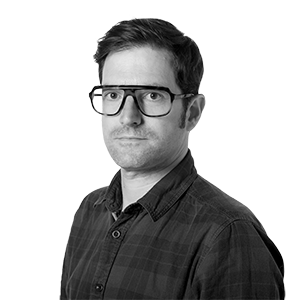How quantum physics has changed the world
Thanks to the understanding of matter at a microscopic level, inventions such as computers and mobile phones have been developed.


The development of the quantum mechanics The discovery that began with German physicist Werner Heisenberg's discovery on the island of Heligoland has allowed us to understand how matter works at microscopic scales with an unprecedented degree of precision and detail. And, as always, with understanding comes applications. Surely, as he strolled headlong along the cliffs of that remote island, Heisenberg wasn't thinking about the applications of his quest. He was driven by the pure curiosity to understand nature at its most fundamental level, the intellectual challenge it posed, and, most likely, the ego-sting that represented the possibility of solving a puzzle that Einstein himself was struggling with. But what Heisenberg discovered on that island, and which many other people helped to expand, changed the world. And it did so because it contained the seeds of three types of ideas: scientific ones, which explain how nature works; technological ones, which manipulate matter for practical benefit; and social ones, which redraw the organization of society.
First Quantum Revolution
"The possibility of understanding materials and many-particle systems gave rise to what is called First Quantum Revolution", explains Alba Cervera, a quantum computing researcher at the Barcelona Supercomputing Center. This revolution began in the middle of the last century with the study of semiconductor materials and enabled the manufacture of so-called transistors, devices that amplify electric current and form the basis of electronic circuits. Without transistors, we wouldn't have computers or mobile phones.
Quantum physics also led to inventions such as the laser, a coherent beam of light of a single color that, depending on its intensity, can be used to read information on optical devices such as CDs, to cut wood or metal, or to perform surgical procedures and cure, among many other things, benign prostate tumors. Still in the medical field, nuclear magnetic resonance can be used to diagnose several types of cancer. And in the field of energy, photovoltaic panels work thanks to the understanding of the photoelectric effect that earned Einstein the Nobel Prize in 1921.
Another interesting application is atomic clocks, which are based on the oscillations of the cesium atom. This allows them to deviate from the time by only one second every million years, a precision that seems exaggerated, but which is essential for the proper functioning of systems like GPS: a deviation of just one thousandth of a second would translate into an error of three kilometers.
Second Quantum Revolution
"Thanks to the ability to manipulate atoms individually, new applications such as quantum cryptography and quantum computers have been developed," explains Cervera. These new applications have given rise to what is now called Second Quantum Revolution.
Quantum computers take advantage of some of the quantum properties of atoms to process information differently than conventional computers. This allows them to perform some calculations at much higher speeds. "At the moment, these are very specific calculations and far removed from real-world applications, but they have already shown that they can be superior," says Cervera. In fact, in 2019, a Google quantum computer performed a calculation in 200 seconds that would have taken a classical supercomputer ten thousand years.
One of the most overwhelming potential of these devices is that, thanks to their computing power, they will be able to decipher encrypted information circulating on the internet. Therefore, in parallel, quantum cryptography systems are being developed that, thanks to the use of photons flowing through fiber optic channels, are capable of detecting the alteration caused by any spy in the message and stopping the communication.
It's still too early to say how far these systems will change communications and, perhaps, social organization, but what is clear is that they have enormous potential influence. And Heisenberg, like any other researcher working in basic science, wouldn't have even imagined it.
